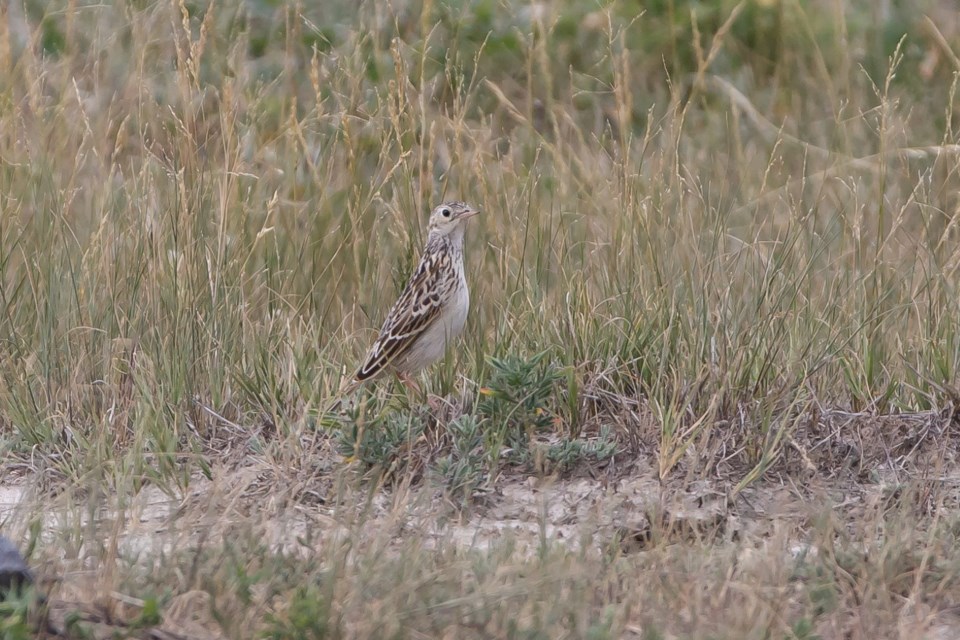REGINA — You may have heard it before, without even realizing what it was: a soft, tinkling call from an unseen bird, soaring high above the prairies.
It’s the ethereal call of the male Sprague’s Pipit, who have one of the longest-known flight displays of any bird species in the world, able to call for three hours at a time, up to 100 metres above the ground. Nature Saskatchewan is asking for the public’s help in monitoring and protecting this unique grassland bird.
These cryptic, secretive birds are roughly sparrow-sized, measuring about six inches tall with legs that are long in comparison to their bodies. They have buffy brown, streaked plumage on their backs and heads, with a ‘necklace’ of short, brownish streaks above a pale, unmarked belly and flanks. Their white tail feathers are especially noticeable when fanned out during flight, forming a stark contrast to the inner brown feathering. They mostly remain out of sight and are most easily detectable by their tinkling call.
Sprague’s Pipits require large, unbroken tracts of native prairie, typically more than 160 acres in size, with minimal woody shrub and tall grass cover. They also stay away from areas that are grazed too short or have too much bare ground.
“Pipits are often referred to as the ‘Goldilocks’ bird because they tend to need things just right,” explains Emily Putz, Habitat Stewardship co-ordinator. “They prefer native grass ranging from 10-30 centimetres in height, which can often be found in areas that have been moderately grazed.”
Between mid-May and mid-July, these birds lay three to six eggs on the ground in grass-lined, cup-shaped nests surrounded by vegetation. Females incubate the eggs for 11-15 days, and after hatching both parents will feed the chicks and clean the nest site, with young pipits leaving the nest about 10-13 days after hatching.
“Pipits are generalist insectivores, and will forage on the ground scooping up and swallowing any arthropod they can find, though grasshoppers and spiders are known favourites”, explains Putz.
“Especially with hungry chicks, a Sprague’s Pipit family will eat a huge number of grasshoppers in a summer.”
Unfortunately, Sprague’s Pipits are listed as threatened in Canada as their populations have been shrinking in recent decades. Landholders and land managers can help the pipit by conserving native prairie Landholders can also ensure that livestock grazing is kept to healthy levels on quarters covered by native prairie or perennial forage. It is also recommended that any haying – which does help to maintain suitable habitat for pipits in tame pastures – is not done until after July 15, once pipits have left the nests and are not in danger of being crushed.
Nature Saskatchewan’s Stewards of Saskatchewan Banner program aims to engage participants in contributing to Sprague’s Pipit population monitoring and habitat conservation. Nature Saskatchewan also has funding available for the construction of wildlife-friendly fencing and for native seeding projects, both of which can contribute to the conservation of Sprague’s Pipits and the improvement of their habitat by keeping grazing on the landscape.
If you happen to hear or spot a Sprague’s Pipit this summer, please report your sighting to Nature Saskatchewan’s toll-free HOOTline, 1-800-667-HOOT (4668) or email Emily Putz at [email protected]. Every sighting helps with tracking the population and range of this iconic prairie bird. All caller and program participant information is kept confidential.


